Each year, a select diverse committee of experts from the Center for the Study of Multicultural Children’s Literature (CSMCL) identifies the best in multicultural books. The mission of the CSMCL is to provide children, teachers, parents, educators, students, and librarians access to multicultural children’s books with high literary and artistic standards. CSMCL presents the Best Multicultural Children’s Books of 2014. Enjoy! This year’s list was complied by Dr. Claudette Shackelford McLinn, Dr. Naomi Caldwell, Dr. Sujin Huggins, Ana- Elba Pavon, Lessa K. Pelayo-Lozada, and Elsa Marston.

Best Books 2014 (photo courtesy of CSMCL)
BECAUSE THEY MARCHED: THE PEOPLE’S CAMPAIGN FOR VOTING RIGHTS THAT CHANGED AMERICA, by Russell Freedman, 83 pages, published by Holiday House, ©2014 (Middle school/High school, nonfiction)
BLOSSOMING UNIVERSE OF VIOLET DIAMOND: THE, by Brenda Woods, 222 pages, published by Nancy Paulson Books, an imprint of Penguin Group, ©2014 (Upper elementary school/Middle school, fiction)
BROWN GIRL DREAMING, by Jacqueline Woodson, 336 pages, published by Nancy Paulsen Books, an imprint of Penguin Group, ©2014 (Upper elementary school/Middle school/High school, nonfiction/autobiography)
CROSSOVER, THE, by Kwame Alexander, 237 pages, published by Houghton Mifflin Harcourt, ©2014 (Middle school/High school, fiction/novel in verse)
DREAMING IN INDIAN: CONTEMPORARY NATIVE AMERICAN VOICES, edited by Lisa Charleyboy and Mary Beth Leatherdale, 128 pages, published by Annick Press, ©2014 (Middle school/High school, nonfiction/autobiography)
FREEDOM SUMMER MURDERS, THE, by Don Mitchell, 250 pages, published by Scholastic Press, ©2014 (Middle school/High school, nonfiction)
FRIDA & DIEGO: ART, LOVE, LIFE, by Catherine Reef, 168 pages, published by Clarion Books/ Houghton Mifflin Harcourt, ©2014 (Middle school/High school, nonfiction/collective biography)
GABI: A GIRL IN PIECES, by Isabel Quintero, 284 pages, published by Cinco Puntos Press, ©2014 (High school, fiction)
GREAT GREENE HEIST, THE, by Varian Johnson, 226 pages, published by Arthur A. Levine Books, an imprint of Scholastic, Inc., ©2014 (Upper elementary school/Middle school, fiction)
GREEN IS A CHILE PEPPER: A BOOK OF COLORS, by Roseanne Greenfield Thong, illustrated by John Parra, 32 pages, published by Chronicle Books, ©2014 (Preschool/Elementary school, fiction, picture book)
HIDDEN LIKE ANNE FRANK: 14 TRUE STORIES OF SURVIVAL, by Marcel Prins & Peter Henk Steenhuis, translated by Laura Watkins, 211 pages, published by Arthur A. Levine Books, ©2014 (Middle school/High school, nonfiction)
HOUSE OF PURPLE CEDAR, by Tim Tingle, 326 pages, published by Cinco Punto Press, ©2014 (High school, fiction)
JOSEPHINE: THE DAZZLING LIFE OF JOSEPHINE BAKER, by Patricia Hruby Powell, illustrated by Christian Robinson, unpaged, published by Chronicle Books, ©2014 (Elementary school/Middle school/High school, nonfiction/biography)
KING FOR A DAY, by Rukhsana Khan, illustrated by Christiane Kromer, 32 pages, published by Lee &Low Books, Inc., ©2014 (Preschool/Elementary school, fiction, picture book)
LITTLE MELBA AND HER BIG TROMBONE, by Katherine Russell-Brown, illustrated by Frank Morrison, 34 pages, published by Lee &Low Books, Inc., ©2014 (Elementary school, nonfiction/biography, picture book)
LITTLE ROJA RIDING HOOD, by Susan Middleton Elya, illustrated by Susan Guevara, 32 pages, published by G. P. Putnam’s Sons, ©2014 (Preschool/Elementary school, fiction, picture book)
MADMAN OF PINEY WOODS, THE, by Christopher Paul Curtis, 363 pages, published by Scholastic Press, ©2014 (Upper elementary school/Middle school, fiction)
MALALA: A BRAVE GIRL FROM PAKISTAN & IQBAL: A BRAVE BOY FROM PAKISTAN, (Two stories in one book) by Jeanette Winter, 20 pages each, published by Beach Lane Books, ©2014 (Elementary school, nonfiction/biography)
NOT MY GIRL, by Christy Jordan-Fenton and Margaret Pokiak-Fenton, art by Gabrielle Grimard, 34 pages, published by Annick Press, ©2014 (Elementary school, nonfiction/autobiography)
PORT CHICAGO 50, THE,: DISASTER, MUTINY, AND THE FIGHT FOR CIVIL RIGHTS, by Steve Sheinkin, 200 pages, published by Roaring Book Press, ©2014 (Middle school/High school, nonfiction)
RED PENCIL, THE, by Andrea Davis Pinkney, illustrated by Shane W. Evans, 308 pages, published by Little, Brown and Company, ©2014 (Upper elementary school/Middle school, nonfiction)
REVOLUTION, by Deborah Wiles, 495 pages, published by Scholastic Press, ©2014 (Upper elementary school/Middle school, fiction/biography)
SEARCHING FOR SARA RECTOR, by Tonya Bolden, 76 pages, published by Abrams Books for Young Readers, ©2014 (Upper elementary school/Middle school, nonfiction/biography)
SECRETS OF THE TERRA-COTTA SOLDIER, by Ying Chang Compestine and Vinson Compestine, 224 pages, published by Amulet Books, ©2014 (Upper elementary school/Middle school, fiction)
SEPARATE IS NEVER EQUAL: SYLVIA MENDEZ & HER FAMILY’S FLIGHT FOR DESEGREGATION, written and illustrated by Duncan Tonatiuh, 40 pages, published by Abrams Books for Young Readers, ©2014 (Elementary school, nonfiction, picture book)
SHADOW HERO, THE, by Gene Luen Yang, art by Sonny Liew, 158 pages, published by First Second, ©2014 (Middle school/High school, graphic novel, fiction)
SILVER PEOPLE: VOICES FROM THE PANANA CANAL, by Margarita Engle, 260 pages, published by Houghton Mifflin Harcourt, ©2014 (Middle school/High school, fiction/novel in verse)
STRIKE: THE FARM WORKERS’ FIGHT FOR THEIR RIGHTS, by Larry Dane Brimner, 172 pages, published by Calkins Creek, an imprint of Highlights, ©2014 (Middle school/High school, nonfiction)
TIME TO DANCE, A, by Padma Venkatraman, 307 pages, published by Nancy Paulsen Books, an imprint of Penguin Group, ©2014 (Middle school/High school, fiction/novel in verse)
TWENTY-TWO CENTS: MUHAMMAD YUNUS AND THE VILLAGE BANK, by Paula Yoo, illustrated by Jamel Akib, 40 pages, published by Lee & Low Books Inc., ©2014 (Elementary school, nonfiction/biography)
VIVA FRIDA, by Yuyi Morales, photographs by Tim O’Meara, 34 pages, published by Roaring Book Press, ©2014 (Elementary school, nonfiction/biography)
*********************************************************************
Today’s guest blogger is Dr. Claudette S. McLinn. Dr. McLinn is the Executive Director of the Center for the Study of Multicultural Children’s Literature. She has been a school librarian, teacher, adjunct professor, and bookseller.
Please note that as a guest post, the views expressed here do not represent the official position of ALA or ALSC.
If you’d like to write a guest post for the ALSC Blog, please contact Mary Voors, ALSC Blog manager, at [email protected].

I’m going to be completely honest with you, I have written- and rewritten- this blog post about 10 times. It’s not because I don’t know what to say, it’s because I have too much to say. When you spend as much time, energy and passion on Multicultural Children’s Literature as I have, it sometimes becomes hard to step back and see the forest- not just the trees.
When this happens, I literally play entire conversations out in my head, just so I can streamline my thoughts. This is the conversation going on in my head right now:
My Brain (MB): Okay Alyson, here’s your chance to explain to all these people the one thing you’re so passionate about. Try not to make it so wordy (too late), and think, if there was one sentence that you could use to sum up multicultural literature, what would it be?
Me: I guess, well who I am I kidding, I know that that one sentence would be: “It’s all about authenticity.”
MB: See, that wasn’t so hard, was it?
___________________________________________
Multicultural literature can be a mirror, a window, and a sliding glass door 1: it can be a reflection of the reader, it can show them another world, and it can empower them to take action. It is written from an authentic perspective by a member of the subject’s culture or someone who has been privy to those experiences 2, and is respectful and free of stereotypical depictions both in words and images.
Multicultural literature is important, because all too often it allows us to hear the voices of those who have been silenced and whose stories have not been told.
Multicultural Children’s Literature is about more than just the Pura Belpré medal, and the Coretta Scott King award. It’s about making these stories, experiences, and lives- especially those that aren’t represented by awards- heard all the time. Multiculturalism is about more than just race and creed. It’s gender, sexuality, religion- it’s identity; and it’s about insuring they are shared in an authentic way.
Right now, there is a groundswell of support for diversity in the book world. I urge you to take that one step further, and push for multiculturalism. I’m not asking you to write a letter to a publisher or even use a hash tag- not everyone is comfortable with that. I’m asking that you start looking through your collections to make sure that you have books that reflect the author’s unique and authentic perspective. That the works be free of stereotypes and that they make you feel as though you are looking at yourself while learning about someone else.
Recommended Reading:
Campbell, Shelley. “Windows and Mirrors: A Case for More Multicultural Children’s Books Illinois Children’s Choice Award Lists.” Illinois Reading Council Journal 38. (2010): 33. Web.
Johnson Higgins, Jennifer. “Multicultural Children’s Literature: Creating and Applying an Evaluation Tool in Response to the Needs of Urban
Educators.” New Horizons for Learning (2000): n. pag. Http://education.jhu.edu/PD/newhorizons/strategies/topics/multicultural-education/multicultural-childrens-literature/. Johns Hopkins University. Web.
Landt, Susan M. “Children’s Literature with Diverse Perspectives: Reflecting All Students.” The Dragon Lode 32.1 (2013): 21-31. Print.
Norton, Donna E. Multicultural Children’s Literature: Through the Eyes of Many Children. 4th ed. Upper Saddle River, NJ: Pearson/Merrill Prentice Hall, 2013. Print.
Rochman, Hazel. Against Borders: Promoting Books for a Multicultural World. Chicago: American Library Association, 1993. Print.
Sims Bishop, Rudine. Perspectives: Choosing and Using Books for the Classroom. 3rd ed. Vol. 6. Columbus: Ohio State UP, 1990.
Woodson, Jacqueline. “Who Can Tell My Story.” The Horn Book Magazine 74.Jan/Feb (1998): 34-38.
********************************************************
Footnotes:
1 Sims Bishop, Rudine. Perspectives: Choosing and Using Books for the Classroom. 3rd ed. Vol. 6. Columbus: Ohio State UP, 1990.
2 Woodson, Jacqueline. “Who Can Tell My Story.” The Horn Book Magazine 74.Jan/Feb (1998): 34-38.
********************************************************
Our guest blogger today is Alyson Feldman-Piltch. Alyson lives in Brookline, MA. She is almost done with her MLS/MIS program and will graduate from Indiana University at Bloomington in May 2015. She is the Chair for the Task Force for Establishing Guidelines for Selecting Multicultural Materials through EMIERT-ALA, as well as a member of the ALSC Intellectual Freedom Committee and the 2015 Stonewall Book Award Committee.
When she isn’t reading, doing homework, blogging, or sleeping, Alyson can usually be found at Fenway Park or a midnight movie showing at the Coolidge Corner Theatre. She can be reached at [email protected] and can be found on Twitter by following @aly_fp.
Please note that as a guest post, the views expressed here do not represent the official position of ALA or ALSC.
If you’d like to write a guest post for the ALSC Blog, please contact Mary Voors, ALSC Blog manager, at [email protected].

By Federico Lenzerini
When, in 1935, the Permanent Court of International Justice was requested by the Council of the League of Nations to provide an advisory opinion on the Minority Schools in Albania, it emphasized that “the application of the same regime to a majority as to a minority, whose needs are quite different, would only create an apparent equality.” The Court also added that the rationale of the protection of minorities is to allow them to “preserving the characteristics which distinguish them from the majority, and satisfying the ensuing special needs” (ibid., at 48). The well-known Aristotelian formula — according to which equality consists in treating like cases alike and unlike cases differently — implies that the metaphysical “idea of equality of men as persons and equal treatment” should be handled in a flexible manner, to allow “different treatment of persons [when it is justified by] the consideration of the differences of factual circumstances such as sex, age, language, religion, economic condition, education, etc.”
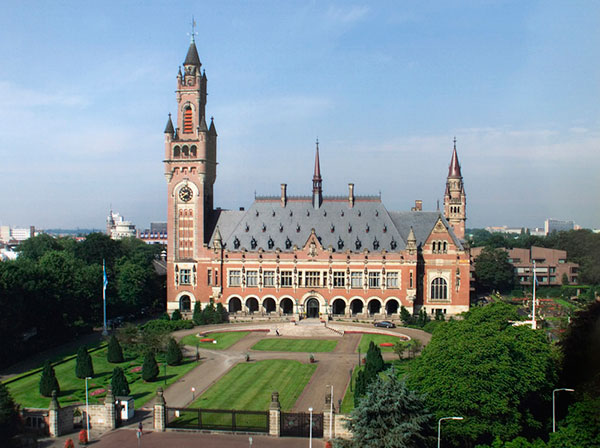
International Court of Justice, The Hague, Netherlands. Public domain via Wikimedia Commons.
If one were asked to choose one word to embrace all factual — but also spiritual, intellectual and emotional — circumstances (rectius: ”elements”) determining the existence of differences among individuals and communities, this word would certainly be culture, intended as “the whole complex of distinctive spiritual, material, intellectual and emotional features that characterize a society or social group [including] not only the arts and letters, but also modes of life, the fundamental rights of the human being, value systems, traditions and beliefs” (1982 UNESCO Mexico City Declaration on Cultural Policies).
Culture is indeed the element determining the uniqueness, identity, and distinctiveness of each human being (as an individual) and community (as a collectivity). Ultimately, the cultural specificity of each person or community determines their life aspirations, expectations, and choices. Since human rights are one of the main “tools” available to human beings to pursue their life expectations and dreams, their strict interconnection with culture is beyond question. Therefore, conceiving human rights in terms of a monolithic system of inflexible rules destined to be applied according to pre-determined and standardized criteria wouldn’t help much in ensuring their effectiveness in pursuing the well-being and happiness of human beings.
On the contrary, the correct approach to international human rights law–in terms of understanding, interpretation, adjudication and redress for breaches–should be centered on the idea of multiculturalism, so as that in each concrete case the specific needs of the people specifically concerned should be taken into primary account. In the most recent decades such an approach has actually been adopted in the context of relevant international practice, which, through promoting the process of culturalization of human rights law, is making human rights standards much more responsive to the real needs of human beings and, a fortiori, much more effective.
The specific situation of indigenous peoples–who, due to their cultural specificity and vision of life, actually need a differentiated treatment in the context of human rights adjudication and enforcement–offers a very clear idea of how such a process works. Human rights monitoring bodies have developed a marked sensibility for their needs, carving in stone a noticeably evolutionary piece of culturally-responsive jurisprudence. In particular, they have “adapted” human rights standards of individual character to the collectively-driven understanding of life and social relationships of indigenous peoples. In this respect, for example, the Human Rights Committee has affirmed that, although the rights of the members of ethnic, religious, or linguistic minorities to enjoy their own culture, to profess and practice their own religion, or to use their own language, contemplated by Article 27 of the International Covenant on Civil and Political Rights, “are individual rights, they depend in turn on the ability of the minority group to maintain its culture, language, or religion. Accordingly, positive measures by States may also be necessary to protect the identity of a minority” (General comment No. 23(50) (art. 27)).
To a similar extent, most monitoring bodies have extended the scope of human rights treaty provisions defending the individual right to property to cover the collective property of ancestral lands by indigenous peoples. A similar hermeneutic approach has been followed with respect to the interpretation of other human rights standards, through adapting them to the cultural needs and views of indigenous communities. This happens, for instance, with respect to the right to humane treatment, which includes the right of every person to have their physical, mental, and moral integrity respected and, consequently, the prohibition of torture or cruel, inhuman, or degrading treatment or punishment. So, for example, the Inter-American Court of Human Rights has equated a community that is denied the possibility of burying its dead according to its own traditions to inhuman treatment. This is because such a situation is perceived by the community members–in light of their own culture–as a severe offence, leading “to a number of ‘spiritually-caused illnesses’ that become manifest as actual physical maladies and can potentially affect the entire natural lineage” of the community itself (e.g. Case of Moiwana Community v. Suriname). This practice is certainly to be welcomed, and its extension to the specific needs of all diverse cultural groups inhabiting the world promises to represent a huge step forward towards maximizing the effectiveness of human rights standards in the life of people.
Federico Lenzerini is Professor of International Law and European Union Law at the University of Siena (Italy). He is also Professor at the LLM programme in Intercultural Human Rights of the St. Thomas University School of Law, Miami (FL), USA. He is the author of the book The Culturalization of Human Rights Law, published by Oxford University Press in 2014. Federico Lenzerini can be found on LinkedIn.
Subscribe to the OUPblog via email or RSS.
Subscribe to only law articles on the OUPblog via email or RSS.
The post Multiculturalism and international human rights law appeared first on OUPblog.

Happy Mother’s Day! Did you enjoy celebrating Día ? Don’t forget to share any pictures that you might have taken. I hope that you had a wonderful time observing Día at your library with local families and friends. Now that April 30th has come and gone, don’t think your opportunity to incorporate diversity into your programming and collection has passed! Día celebrates children and books while also encouraging families and children to connect with multicultural books, cultures and languages. To honor the special ladies we all treasure today, I’ve put together some of my favorite books about mothers that can expose children to different cultures and languages.
Mama, Do You Love Me? by Barbara Joosse (Chronicle Books, 1998) is a great choice for a multicultural Mother’s Day read. This story tells of an Inuit mother and daughter and is set in the majestic wilderness of Alaska. The child seeks to find out whether her mother will love her no matter what she does. Children will learn about the native creatures of Alaska as the child imagines herself as a polar bear and musk ox. Preschoolers will be delighted with Lavallee’s artwork depicting mother and daughter clad in Inuit garb. A Canadian historian even assisted in checking the manuscript to assure that the Inuit culture was portrayed accurately in this book.

Image courtesy of Chronicle Books.
Kindergarteners will enjoy My Mom is a Foreigner, But Not to Me by Julianne Moore (Chronicle Books, 2013). This is a lovely picture book that explores the feelings some children may have when they have a parent from another country. Children can learn how to say, “I love you, Mom!” in a variety of languages such as German and French. So’s beautiful illustrations exhibit various ethnic clothing and foods.
For the remarkable grandmothers in your life, read All About Grandmas by Roni Schotter (Dial Books for Young Readers, 2012). This charming book looks at grandmas of all shapes, sizes and colors! Children can learn how to say “grandma” in 50 languages thanks to a convenient list in the front of the book. Grandchildren will love reading this with their Lola (Philippine dialect) , Farmor (Swedish) or Oma (German).

Image courtesy of Vanita Books.
My final selection for Mother’s Day, A Tale of Two Mommies by Vanita Oelschlager (Vanita Books, 2011), follows a young boy at the beach as he discusses his two mothers with his friends. This is a fun choice for any same-sex couples who may have children with questions about their non-traditional family dynamic, as it shows that they are really not that different from other families at all.
What are some of your favorite titles to share on Mother’s Day?
______________________________________________________________
Nicole Lee Martin is a Children’s Librarian at the Grafton-Midview Public Library in Grafton, OH and is writing this post for the Public Awareness Committee. You can reach her at [email protected].

…is about to crack wide open thanks to some REALLY good news I’ve read from a recent press release – sent to me from my friend and author, Cindy Pon.

Author Cindy Pon
| By Press Release |
March 29, 2012 |
|
A press release from Hannah Ehrlich of Lee & Low Books: |
Tu Books, a new imprint of Lee & Low Books that publishes diverse science fiction and fantasy for young readers, has announced the upcoming publication of Diverse Energies, a YA anthology of dystopian stories edited by author Tobias S. Buckell and literary agent Joe Monti. The anthology, which will be released in Fall 2012, will feature stories by several award-winning speculative fiction writers including Ursula K. Le Guin, Paolo Bacigalupi, Malinda Lo, Cindy Pon, and Greg van Eekhout.
The stories in Diverse Energies journey through many alternate histories and projections of the future, but all have one important element in common: the inclusion of people of color. At a time when some fans have criticized The Hunger Games for casting African American actors to play Rue, Thresh, and Cinna, it is more important than ever that science fiction and fantasy worlds include a truly diverse cast of characters.
“So often the future looks whitewashed in YA dystopias,” says Tu Books Editorial Director Stacy Whitman. “In general many authors, including Tobias, feel that there is a gap in which people of color looking for depictions of themselves in the future can’t find them, especially young readers. These outstanding stories show that even in a dystopian future, people of color have a place.”
Stories include Paolo Bacigalupi’s “A Pocketful of Dharma,” about a young boy in a futuristic China whose encounter with a Tibetan conspiracy changes his life. Malinda Lo’s “Good Girl” is about a girl searching for her brother in what they think is the last city on earth, a doomed, tightly controlled New York City. “It’s about manipulation and loss and the hope of possibilities,” says Whitman. Meanwhile, Ellen Oh’s “The Last Day” takes a second look at history and considers what might have happened had Nagasaki and Hiroshima not ended the Pacific Theater of World War II.
The title Diverse Energies comes from a quotation from John F. Kennedy that both Buckell and Monti felt encapsulated their desire for greater diversity in fantasy and YA: “No one can doubt that the wave of the future is not the conquest of the world by a single dogmatic creed but the liberation of the diverse energies of free nations and free men.”
“I hope Diverse Energies sends the message that multiculturalism is the future, and a strength,” says Buckell.










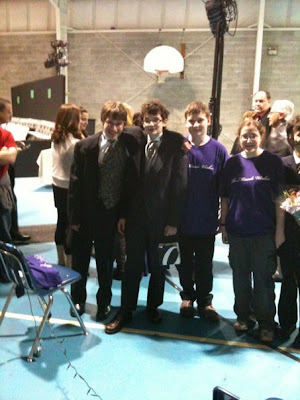
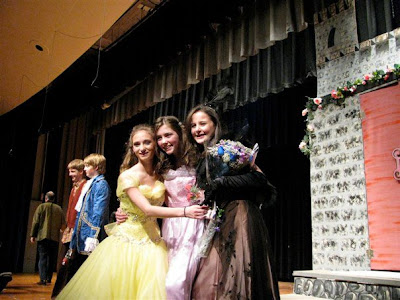
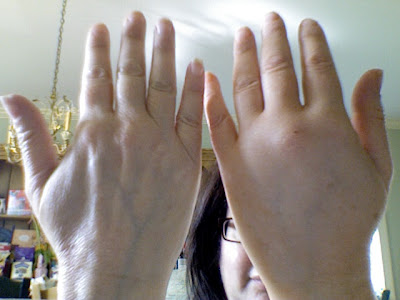
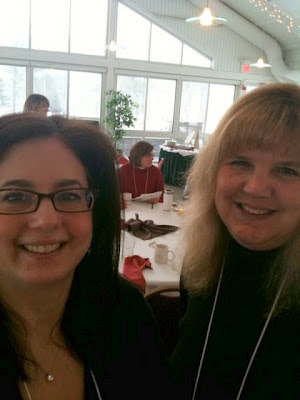
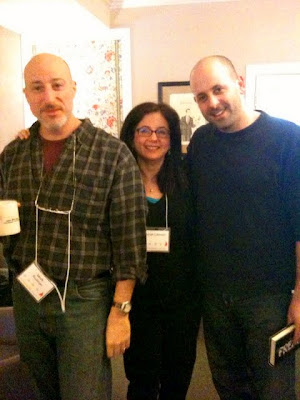
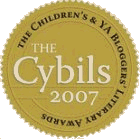

Ms. Bernhard,
Your book sounds intriguing. I definitely want to share it with my grandchildren, whose father is from Nepal.
Write on!